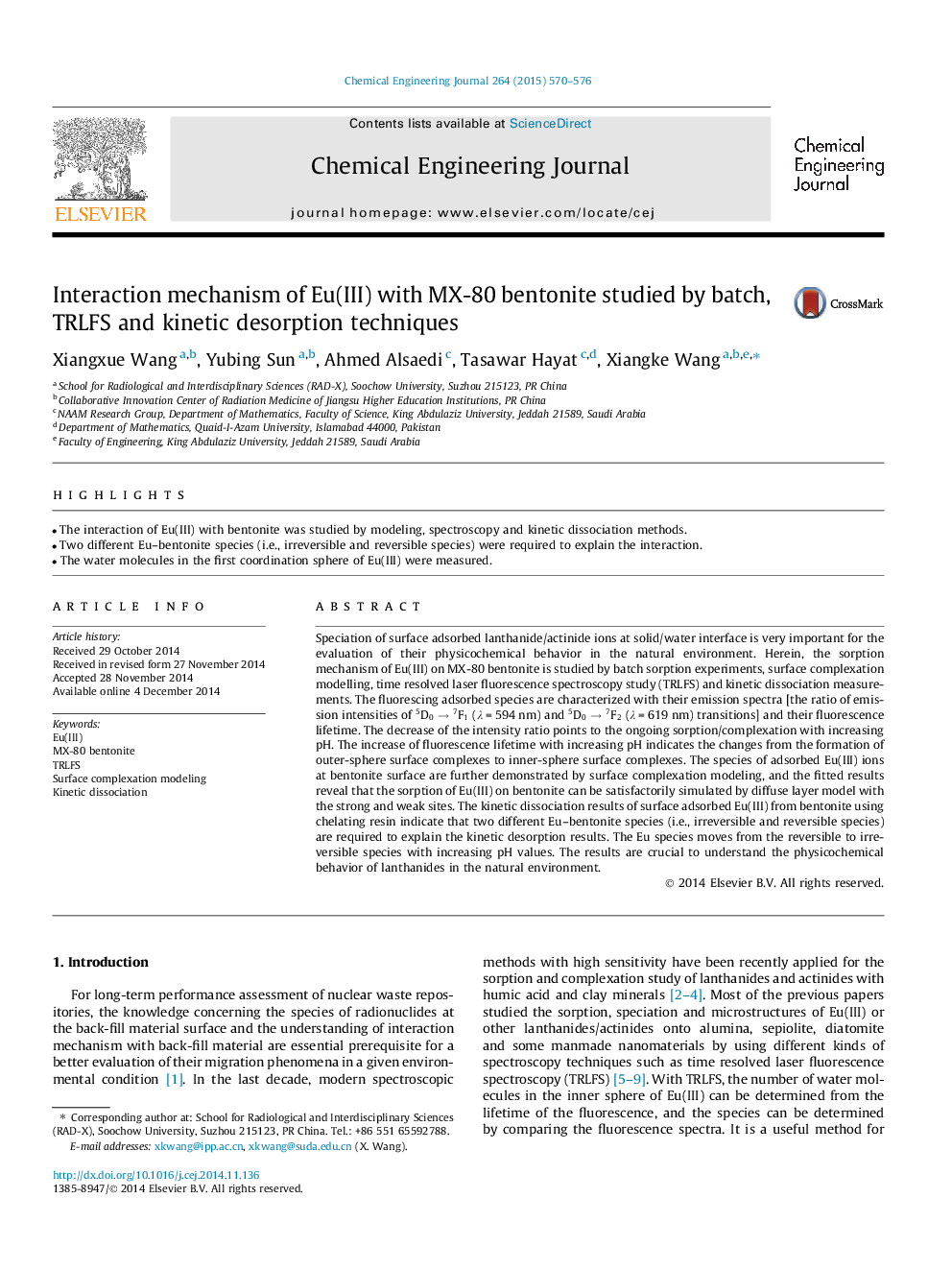| کد مقاله | کد نشریه | سال انتشار | مقاله انگلیسی | نسخه تمام متن |
|---|---|---|---|---|
| 146860 | 456379 | 2015 | 7 صفحه PDF | دانلود رایگان |

• The interaction of Eu(III) with bentonite was studied by modeling, spectroscopy and kinetic dissociation methods.
• Two different Eu–bentonite species (i.e., irreversible and reversible species) were required to explain the interaction.
• The water molecules in the first coordination sphere of Eu(III) were measured.
Speciation of surface adsorbed lanthanide/actinide ions at solid/water interface is very important for the evaluation of their physicochemical behavior in the natural environment. Herein, the sorption mechanism of Eu(III) on MX-80 bentonite is studied by batch sorption experiments, surface complexation modelling, time resolved laser fluorescence spectroscopy study (TRLFS) and kinetic dissociation measurements. The fluorescing adsorbed species are characterized with their emission spectra [the ratio of emission intensities of 5D0→7F15D0→7F1 (λ = 594 nm) and 5D0→7F25D0→7F2 (λ = 619 nm) transitions] and their fluorescence lifetime. The decrease of the intensity ratio points to the ongoing sorption/complexation with increasing pH. The increase of fluorescence lifetime with increasing pH indicates the changes from the formation of outer-sphere surface complexes to inner-sphere surface complexes. The species of adsorbed Eu(III) ions at bentonite surface are further demonstrated by surface complexation modeling, and the fitted results reveal that the sorption of Eu(III) on bentonite can be satisfactorily simulated by diffuse layer model with the strong and weak sites. The kinetic dissociation results of surface adsorbed Eu(III) from bentonite using chelating resin indicate that two different Eu–bentonite species (i.e., irreversible and reversible species) are required to explain the kinetic desorption results. The Eu species moves from the reversible to irreversible species with increasing pH values. The results are crucial to understand the physicochemical behavior of lanthanides in the natural environment.
Journal: Chemical Engineering Journal - Volume 264, 15 March 2015, Pages 570–576